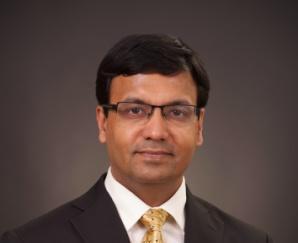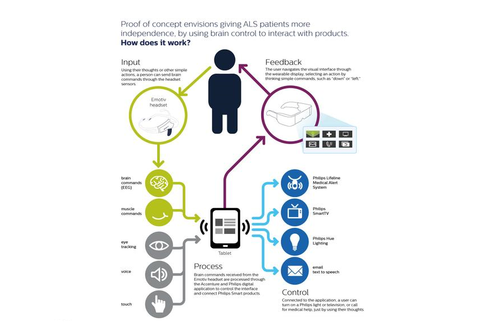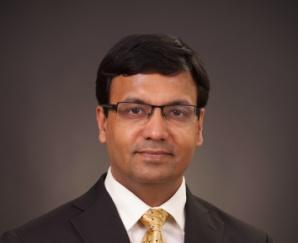Researchers tap big data analytics and Internet of Things technologies to improve healthcare for people with neurodegenerative and cardiac diseases.


Technology Declares War On Cancer
Technology Declares War On Cancer (Click image for larger view and slideshow.)
Two independent proofs of concept, using currently available technologies, could one day reshape how providers care for cardiac patients and people with neurodegenerative diseases such as amyotrophic lateral sclerosis (ALS).
While parties involved in these projects caution their work needs more time and research, the implications are exciting because both programs use existing products. The cardiac research leverages big data and analytics, while the ALS initiative incorporates wearable and Internet of Things devices.
Autonomy for ALS patients
Royal Philips and Accenture unveiled a proof of concept software on Tuesday that could give more autonomy to people with ALS or other neurodegenerative diseases. It works when a wearable display and Emotiv Insight Brainware, which measures electrical activity from brainwaves, connect to a tablet that enables people to use brain commands to control Philips products including Lifeline Medical Alert Service, SmartTV (with TP Vision), and Hue personal wireless lighting, according to the vendor. Users also can control the system via eye and voice commands, said Thibaut Sevestre, innovation lead for IT architecture and platforms at Philips, in an interview.
"We built an app that evolves with the disease of the patients, that learns multiple touches of impact," he said. "We came up with a very simplified menu structure that evolves depending on whether it's a tablet or wearable display and the type of input you're using."
[Learn more about how IT is helping treat diseases. See 10 Technologies Changing Diabetes Care.]
The mission was personal, Sevestre said. An employee at Philips' partner Accenture had a family member with ALS, and the two organizations set about seeking ways to empower patients to use technology to gain more control over their environments, he said. That lack of autonomy and loss of communication ability were some of the biggest concerns and hurdles ALS patients faced, the companies' research found.
"We cannot communicate with our loved ones. We cannot communicate with our friends, but we are very dependent on them at every level," Sevestre said of ALS patients. "We rely on people around us for all the simple things of every day, so what are the things we could regain control of so we could be a little more autonomous? We had the idea of building this concept, pulling together a lot of tools we have today."
The technology, which is based on open APIs, works in a lab setting with healthy testers, but that has to change before Philips and Accenture can expand usage to people with ALS and other neurodegenerative diseases, he said. Because it could be deemed a medical device, stringent testing is required, and Philips and Accenture are seeking partners within the patient, provider, payer, and other healthcare communities, said Sevestre.
Figure 1:  (Source: Philips)
(Source: Philips)
Since components -- such as the headset and interactive TVs -- have been available for several years, Philips may have another option too, he said. The longtime developer of consumer-oriented products could leverage that experience if the product is not sold as a medical device.
"We'd like to gauge if there is a consumer track that is not healthcare regulated that could help speed up the development of the technology and the way of controlling devices that could help us very quickly gain speed, gain experience, [and] gain volume to make the entry level for the healthcare part lower in terms of cost and lower in terms of experimentation," said Sevestre. "Where is the sweet spot, [where] can we gain more experience faster so we can make that better for the patients?"
As Philips readily admits, the technology is in the early stages of development. Partnerships, research, and feedback will dictate the technology's direction and ultimate success.
The heart of cardiology
When Dr. Partho Sengupta, director of cardiac ultrasound research and associate professor of medicine in cardiology at the Mount Sinai Hospital, wanted to more accurately identify disease patterns from echocardiograms, he sought to use the many data attributes these tests show. He wanted
more than the seven variables cardiologists typically use to determine whether patients have restrictive cardiomyopathy or constrictive pericarditis, which require surgery or medical management.
Having seen how other industries were using cognitive computing and big data to make new discoveries, Sengupta challenged developer Saffron Technology to do the same for healthcare, he told InformationWeek.
Saffron took data from 10,000 attributes per heartbeat, per patient, and used 90 metrics across six locations in the heart. The system collected 20 times the data in one heartbeat compared with traditional means. Without models or extensive data training, diagnosis accuracy increased to 90%, outperforming top physicians and state-of-the-art decision trees that have an average of 54% accuracy, according to Saffron. Specialists had an accuracy of about 76%, said Sengupta.
Figure 2:  Dr. Partho Sengupta
Dr. Partho Sengupta
Accuracy is important -- but equally or perhaps more important is big data's ability to include and review far more information, in greater detail, than human physicians can consume, Sengupta said. Today, doctors typically use seven characteristics to discern whether a patient has restrictive cardiomyopathy or constrictive pericarditis. That data is exported to a spreadsheet of about 40 columns and 60 rows, which physicians review by eye, he said.
"These datasets are very difficult to discern point by point," said Sengupta. "Naturally we average it out. That's how we communicate with our colleagues, but that's a very reductionist approach because there are a lot of attributes you're not taking into consideration."
Like IBM Watson, this cognitive technology is designed to complement doctors' skills. "We are not talking about replacing physicians, but having a helping hand, guiding discovery of a patient's problem," said Sengupta. "Right now we get bogged down with a lot of data we have. It's impossible. It's just exploding. Every day I have patients and reports coming back. How much can I deal with? We need a better way to ingest: Show me the pattern."
Saffron is not yet in the hands of clinicians, but, as testing progresses, the big data tech will extend away from data scientists -- an approach in use by other Saffron clients in different vertical markets, said CEO Gayle Shepherd in an interview. In the case of Mount Sinai, Saffron conducted the analysis for Sengupta's team, but future iterations would allow clinicians to pursue their own research using Saffron tools, she said.
Now in the second round of testing, Sengupta expanded the program to include 130 to 140 patients, compared with about 30 in the first group, he said. In addition to increasing the number of participants, Mount Sinai could explore other chronic, non-communicable conditions such as diabetes, hypertension, and stroke, he said.
"If we can have efficient ways to understand interactions of disease... we can spend more time on taking care of the problem. We need to understand quickly and act on it," said Sengupta.
The Saffron technology already works, he said. It is "getting intelligence day-by-day," Sengupta said, and the team is conducting analysis on real-time data. Once Mount Sinai and Saffron have completed discovery and standardized the approach, the team plans to file its complete findings and share them with the broader healthcare and science community, said Sengupta.
"We are very motivated... You're going to see this happen in the next three, four, five years," he said. "This is the next step in medicine."
Technology is rising in importance in most companies, but is the IT department's importance and reputation also rising? InformationWeek is conducting a survey to determine how IT is perceived in the enterprise. Take the the IT Perception Survey today and be eligible to win a prize. Survey ends Aug. 15.
About the Author(s)
You May Also Like







